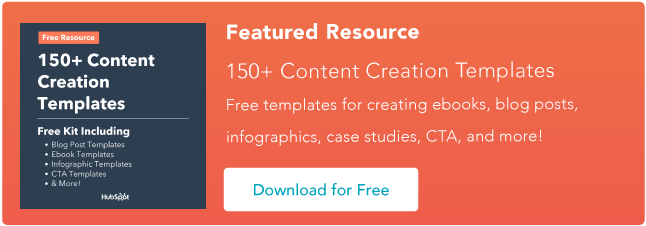In this online era, it’s hard — if not impossible — to surf the web without coming across clickbait. I remember an era when all I could find were clickbait titles that lured me, such as “10 Tips to Help You Lose Weight in a Week.” What I’d find in these articles was little to no information about the topic; rather, the page would be filled with ads.
It’s becoming increasingly difficult to get people to pay attention in the age of social media, especially with the amount of online content. Thus, content writers increasingly turn to clickbait to stand out and achieve those valuable clicks.
Although some titles might surprise you, it’s gotten easier to identify what clickbait is and isn’t. But have you ever wondered why/how the clickbait works? What’s the psychology behind it that makes it nearly impossible to resist the click?
Let’s look at the science behind clickbait and how you can understand the common tricks used.
What’s considered clickbait?
To define the term, clickbait is content that “draws in interest and drives visitors to click a link that leads to a particular web page,” which all content marketers hope to achieve with their work.
The promise of amazing, thought-provoking, or startling information lies in clickbait, enticing us to click on the link. This includes every kind of content on the web, such as blogs, videos, infographics, news stories, interviews, etc., with a dramatic headline.
It’s important to remember that the key difference between clickbait and engaging material is that the former is typically low-quality. Thus, clickbait has a bad reputation in the world of content marketing. That explains why it’s now more important to focus on content that your readers want.
Looking for more guidance on building great content? You can check out our blog post templates to help elevate your content.
Common Clickbait Techniques
One of the more popular clickbait strategies is using controversial headlines. These attention-grabbing headlines frequently use dramatic language or exaggerated claims to encourage readers to click the link. Here are some examples:
- “X Things You Won’t Believe About…”
- “X Beauty Secrets that’ll Change Your Life”
- “Ultimate Guide to Ranking Your Article in a Week”

Apart from these sensationalized headlines, other clickbait tactics include emotive language and imagery. Also, clickbait headlines frequently include strong emotional terms like “shocking,” “amazing,” and “heartbreaking” to pique the user’s interest. Additionally, you can expect the header images to be visually appealing and emotionally engaging.
Let’s check out a few common samples:
- “Shocking Things You Didn’t Know About X Celebrity”
- “X Heartbreaking Stories About These Disney Stars You Should Know About”
- “You’ll Never Guess These Amazing Techniques for Getting Clearer Skin”

Another popular clickbait strategy is instilling a sense of urgency in us, making us want to click the link immediately to avoid missing out on something significant. Headlines with a sense of urgency, such as “Breaking news” or “You won’t believe what happened next,” intrigue readers to learn more.
Such headlines frequently take advantage of our anxiety over missing something significant, such as:
- “You Won’t Believe How You Can Double Your Income in X Days”
- “Breaking News: Why Were These Celebrities Shunned from the Oscars”
- “The Secret to Understanding Your Sleeping Habits”
Considering these tactics, it’s easy to understand why clickbait content successfully grabs readers’ attention and encourages interaction. In fact, having a deeper understanding of these clickbait methods allows you to use clickbait responsibly to produce interesting content that genuinely informs and educates the user rather than deceives them.
Why Clickbait Works
A recent BuzzSumo study on the most shared headlines examined over 100 million stories and found that the phrases that generated the most engagement were “for the first time!” “you need to,” and “…of all time.”
Now, let’s come to why clickbait still grabs readers’ attention. How a headline is worded or presented can significantly impact how readers view the story. If it is made more memorable and engaging, the reader is more likely to notice, process, retain, and interact with certain information.
According to that theory, clickbait titles are effective because they appeal to our curiosity and need for immediate satisfaction. This brings us to our next point, which better explains the theory.
The Curiosity Gap
Although the idea behind the curiosity gap has existed for centuries, it wasn’t until recently that it was given a formal introduction/definition and name. The curiosity gap has gained popularity in the marketing and advertising industries to attract more customers and boost engagement.
Here’s where your content strategy can truly benefit from the psychology of curiosity gaps. If you have something that prompts readers to wonder about something they don’t know or seek more information about, they’ll click immediately to find the answers.
People succumb to clickbait for the same reason — curiosity. One could find it alluring to adopt a more sinister and deceitful strategy to capitalize on curiosity.
However, the curiosity gap works differently.
When creating content, it’s necessary to keep things open-ended since this provides you with a wonderful opportunity to employ creativity to satisfy your audience’s curiosity.
If you give them an unknown and then withhold the answer, you will lose their trust completely, eventually leading to lost followers.
Example of the Curiosity Gap

Here’s an example headline: “The ‘March Madness’ Effect on Company Culture — Win or Bust?” Now, let’s consider how this will pique readers’ interest.
Every American has at least heard of March Madness. My knowledge of the term piques my interest. How does basketball apply to business? Have I seen this at my workplace? I want to know more so I can understand the connection.
Numbers & Lists
Organization appeals to people, so numbers and lists are useful icons for quickly classifying information.
One simple and efficient technique to play the numbers game is to use headlines with numerals and list items. Generally, you must always use precise numbers to look confident and present yourself as an authority to users, leads, and clients.
Example of Using Numbers in the Headline

Let’s take this article, “5 Steps to Create an Outstanding Marketing Plan [Free Templates]” as an example. Notice how the headline clearly states the number and shows the readers a step-by-step process, which plays well into the psychology of organizing with numbers.
My Chrome browser is almost always a mess. I have so many tabs open with tasks to do and articles to read. Seeing a number helps me make a guess of how long it’ll take me to read the piece. Beyond that, I’ll be able to see how far along I am in the article as I read.
Finding How to Use ClickBait Best
A catchy and clickbaity headline may intrigue readers to visit a website. Nevertheless, clickbait typically does very little to encourage conversions and only succeeds in increasing visitors.
When a user clicks on a headline and believes that the content doesn’t provide the answer they want, they will quickly leave the website — increasing the website’s bounce rate.
You can guarantee more genuine engagement by understanding how to leverage curiosity better and understand unique concerns. Clickbait serves the same purpose by generating a psychological gap in curiosity or the urge to learn more.
So, without question, clickbait headlines are effective in drawing readers in and encouraging clicks when used correctly. Ultimately, providing true value in your content is more ethical and provides more significant results for your business than merely employing a misleading headline to drive traffic to your website.
Editor’s note: This post was originally published in June 2014 and has been updated for comprehensiveness.


